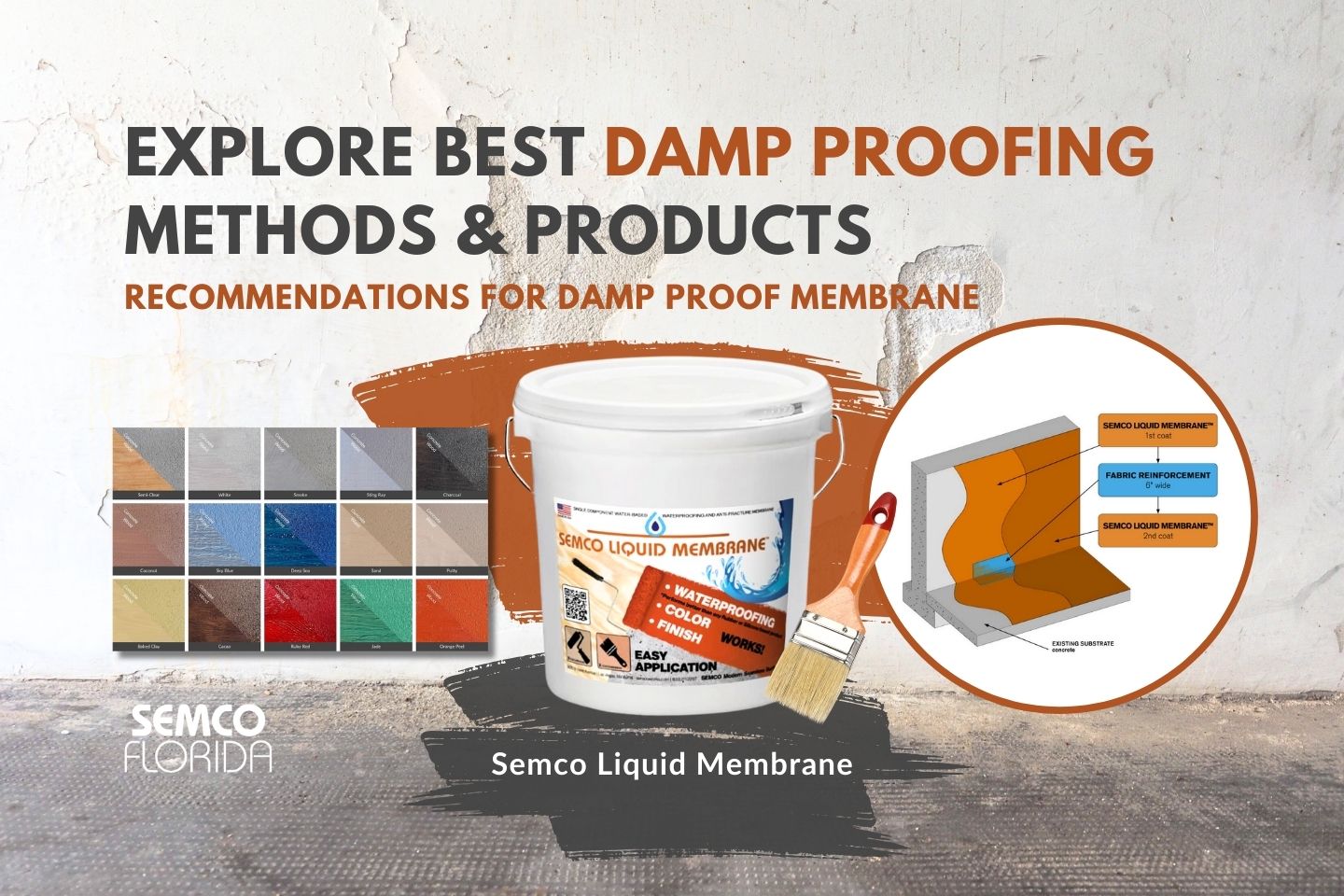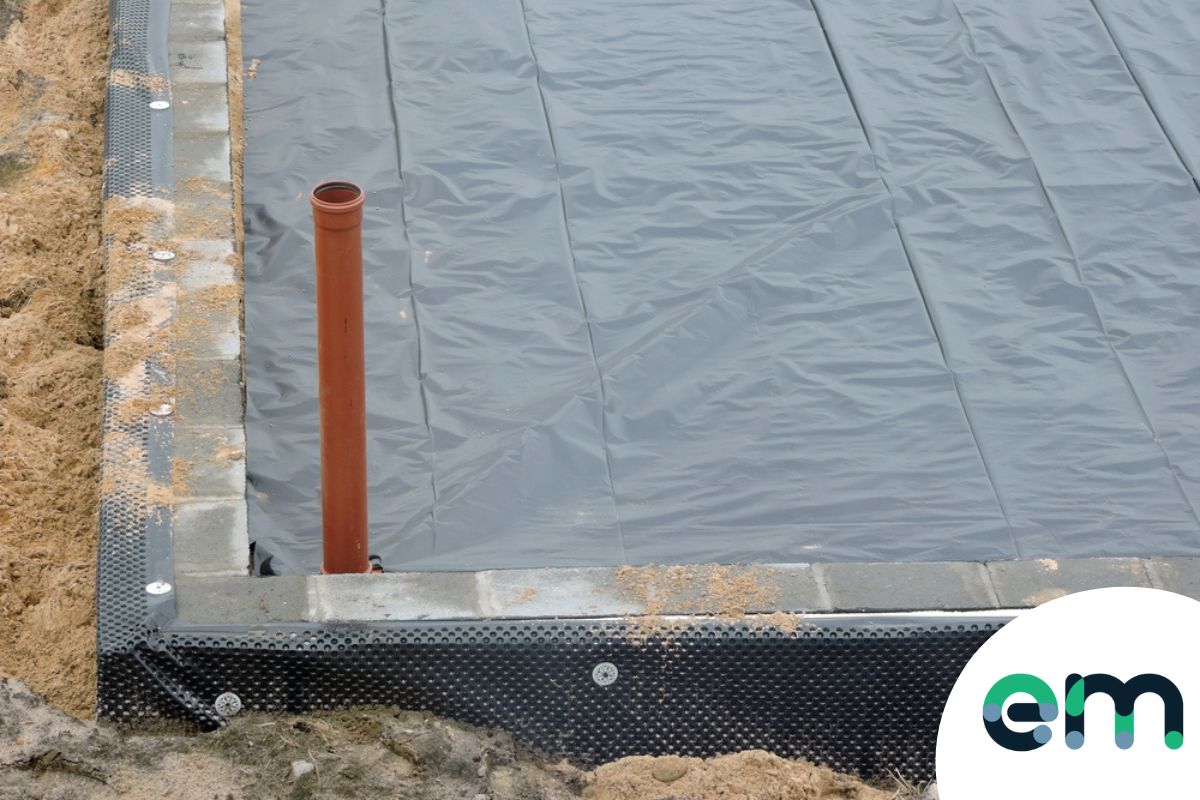Highly recommended companies for damp removal newcastle: What to look for
Highly recommended companies for damp removal newcastle: What to look for
Blog Article
Discovering the Various Methods and Solutions for Effective Damp Proofing
Wetness in buildings postures considerable difficulties to both structural integrity and interior air high quality. Different techniques and solutions have actually emerged to fight this pervasive issue. From conventional damp-proof membranes to innovative chemical treatments, each method offers special advantages. Recognizing these choices is important for efficient moisture control. Picking the right solution depends on specific structure conditions and requirements, prompting additional exploration into the most efficient damp proofing approaches offered.
Understanding the Sources Of Wetness
Although dampness can occur from various resources, understanding these causes is crucial for efficient removal. Typically, wetness originates from three key resources: increasing wet, penetrating wet, and condensation. Climbing damp happens when groundwater takes a trip upwards with porous materials, such as block or rock, usually due to a lack of an effective obstacle (damp removal newcastle). Passing through moist is normally brought on by external elements, including roof covering leaks, malfunctioning gutters, or damaged wall surfaces, enabling water to infiltrate a property. Condensation, on the various other hand, results from excess wetness in the air, commonly intensified by inadequate air flow and temperature level differences, resulting in water droplets developing on surface areas. Identifying these underlying issues is vital, as each sort of wetness needs a customized approach for removal. Proper assessment helps in figuring out the most reliable solutions, inevitably protecting the architectural honesty of a structure and enhancing indoor air top quality
Traditional Damp-Proof Membranes

Chemical Damp-Proofing Solutions
Chemical damp-proofing options offer an innovative method to preventing dampness breach in buildings. These methods typically involve the application of liquid chemicals that permeate stonework and create a barrier against rising damp. Frequently used chemicals include silanes, siloxanes, and various other water-repellent representatives that react with surface products to develop a hydrophobic layer.The application procedure generally needs boring holes right into the wall surfaces, infusing the chemical solution, and permitting it to heal. This approach is especially advantageous for older frameworks where conventional damp-proof membrane layers may be not practical. Furthermore, chemical damp-proofing can be much less disruptive and extra cost-effective than extensive renovation projects.While reliable, these solutions depend upon appropriate application and ecological conditions for peak efficiency. Regular maintenance and monitoring are important to assure the longevity of the damp-proofing therapy. In general, chemical damp-proofing stands for a flexible choice for securing structures versus moisture-related damage
Dental Caries Wall Building And Construction Techniques
Tooth cavity wall building techniques use countless advantages, specifically in moisture control and power performance. By integrating an air gap between 2 layers of stonework, these wall surfaces properly mitigate water ingress while enhancing insulation. This mix not only secures frameworks from wetness however also adds to minimized power consumption.
Advantages of Cavity Walls
When taking into consideration effective wet proofing techniques, the advantages of cavity walls stand apart prominently. Tooth cavity wall surfaces contain two different layers, producing an air gap that effectively lowers dampness infiltration. This layout decreases the danger of moisture, as the outer wall functions as a barrier versus rainfall and water ingress. In addition, tooth cavity wall surfaces enhance thermal insulation, which contributes to energy performance by reducing warm loss. They also give audio insulation, helping to create a quieter indoor environment. In addition, the air void permits air flow, which assists in wetness control and reduces the probability of mold development. These benefits not only boost the total convenience of a structure yet also add to its durability and structural stability.
Wetness Control Approaches
Efficient dampness control techniques are critical in tooth cavity wall building and construction to guarantee lasting defense versus wetness. One main approach entails the incorporation of weep holes, which assist in water drain from the dental caries, preventing accumulation. Furthermore, making use of breathable membrane layers can assist take care of dampness levels while permitting trapped vapor to escape. Proper positioning of insulation is likewise vital, as it ought to not obstruct water drainage paths. Furthermore, ensuring that the outer fallen leaves of the dental caries wall are created with water-resistant materials improves general longevity. Normal upkeep checks are important to recognize any type of blockages or damage early, guarding the framework's honesty. Eventually, a combination of these strategies develops a durable defense versus wetness invasion in dental caries walls.
Insulation and Power Efficiency
Insulation plays a crucial duty in boosting energy efficiency within dental caries wall surface building. By including protecting products, these wall surfaces create a thermal barrier that minimizes heat loss and lowers power intake. Reliable insulation not just assists maintain a stable indoor temperature however additionally minimizes the danger of dampness, as it prevents condensation within the wall dental caries. Various techniques, such as making use of inflexible foam boards or mineral woollen, can be employed to accomplish ideal insulation performance. In addition, correct setup is necessary to assure that gaps and voids are decreased, which can otherwise compromise power effectiveness. Eventually, a well-insulated dental caries wall contributes significantly to general sustainability and lowers heating and cooling prices for homeowners.
External Damp Proofing Techniques
Exterior wet proofing methods are vital for protecting frameworks from moisture infiltration. Two efficient methods include the application of waterproof membranes and the installment of French drains pipes. These options aid mitigate water buildup and preserve the stability of structures.
Waterproof Membrane Application
While numerous techniques exist for protecting against wetness access, the application of water-proof membrane layers remains a highly reliable outside wet proofing technique. These membranes are generally made from products such as polyethylene, rubber, or changed asphalt, providing a durable obstacle versus water infiltration. The setup process includes applying the membrane to the outside surface areas of foundations or wall surfaces, making certain complete protection to avoid leakages. Correct adhesion and sealing at joints are vital to maximizing performance. Waterproof membranes can be used in numerous kinds, consisting of fluid finishings and sheet membranes, allowing for versatility based upon the certain needs of the framework. This approach not only shields buildings from wetness however also improves their durability and structural stability.
French Drain Installment
One effective method for handling groundwater and preventing moisture build-up around a structure's foundation is the setup of a French drain. This water drainage system contains a trench full of gravel and a perforated pipe that reroutes surface water far from the structure. Correct installment needs mindful preparation, making certain that the drain inclines away from the framework to promote suitable water circulation. In addition, the location of the drainpipe is crucial; it should be placed in areas susceptible to merging or excess moisture. Regular upkeep, including cleaning particles from the gravel and guaranteeing the pipeline continues to be unhampered, is important for lasting efficiency. Inevitably, a well-installed French drain can considerably decrease the danger of water-related concerns in structures and cellars.
Inside Waterproofing Methods
Inside waterproofing approaches are essential for shielding a building's interior from moisture seepage and prospective water damage. These approaches commonly entail the application of specialized materials and techniques created to create a dampness obstacle within the structure. One usual technique is making use of water-proof coatings or sealers on wall surfaces and floorings, which protect against wetness from permeating surfaces.Additionally, mounting indoor drainage systems, such as sump pumps, can efficiently handle water buildup in basements and creep spaces. An additional method entails using vapor obstacles, which are set up to hinder wetness movement from the ground right into living spaces.Moreover, resolving any type of splits or gaps in wall surfaces or structures with suitable sealants guarantees a complete protection versus water intrusion. By applying these interior waterproofing strategies, homeowner can significantly decrease the risk of mold and mildew development, structural damages, and various other moisture-related concerns. Appropriate implementation of these methods is important for long-lasting defense and building integrity.
Regular Maintenance and Examination Practices
Regular maintenance and examination practices are important for ensuring the long-lasting effectiveness of wet proofing solutions in any type of structure. Routine checks make it possible for property proprietors to recognize early indications of wetness invasion, such as peeling off paint, mold development, and musty smells. These signs can signify underlying problems that require prompt attention.Inspections ought to be performed at the very least yearly, concentrating on prone locations like basements, creep rooms, and exterior walls. Throughout these analyses, homeowner need to check out sealants, drain systems, and air flow to verify they operate correctly.Additionally, keeping rain gutters and downspouts is essential, check here as blocked systems can lead to water buildup near the structure. Carrying out a routine maintenance schedule, in addition to timely fixings, can considerably expand the life-span of damp proofing steps and shield the structural integrity of the building. Proactive steps eventually add to the general health and wellness of the living atmosphere.
Often Asked Questions
Just How Lengthy Does Damp Proofing Normally Last?
The period of wet proofing effectiveness varies, normally lasting between 20 to 50 years. Aspects such as application high quality, ecological conditions, and upkeep techniques greatly influence the durability of the moist proofing therapy.

Can I Damp Proof My Home Myself?
The private contemplated the expediency of do it yourself damp proofing. With appropriate research and the appropriate materials, it is possible. They also recognized the importance of expert guidance to assure durable performance and stop future issues.
What Are the Signs of Inefficient Damp Proofing?
Indications of inadequate damp proofing include consistent mildewy smells, noticeable mold and mildew growth, peeling off paint, moist patches on walls, and wood degeneration - damp proofing newcastle. Home owners need to attend to these issues without delay to avoid additional damage and health concerns
Does Damp Proofing Affect Indoor Air Top Quality?

Exactly How Much Does Specialist Damp Proofing Cost?
Professional moist proofing prices vary significantly, commonly ranging from $1,000 to $5,000 depending on the residential property's size, the extent of the moist concern, and chosen techniques. Each situation needs a tailored evaluation for precise prices. Frequently, moisture originates from 3 primary resources: increasing damp, passing through moist, and condensation. When considering effective damp proofing methods, the advantages of cavity walls stand out prominently. Exterior wet proofing methods are important for securing frameworks from wetness infiltration. While different techniques exist for preventing moisture ingress, the application of waterproof membranes remains a highly efficient outside moist proofing strategy. Signs of inadequate damp proofing consist of consistent stuffy smells, visible mold development, peeling off paint, moist patches on walls, and timber degeneration.
Report this page